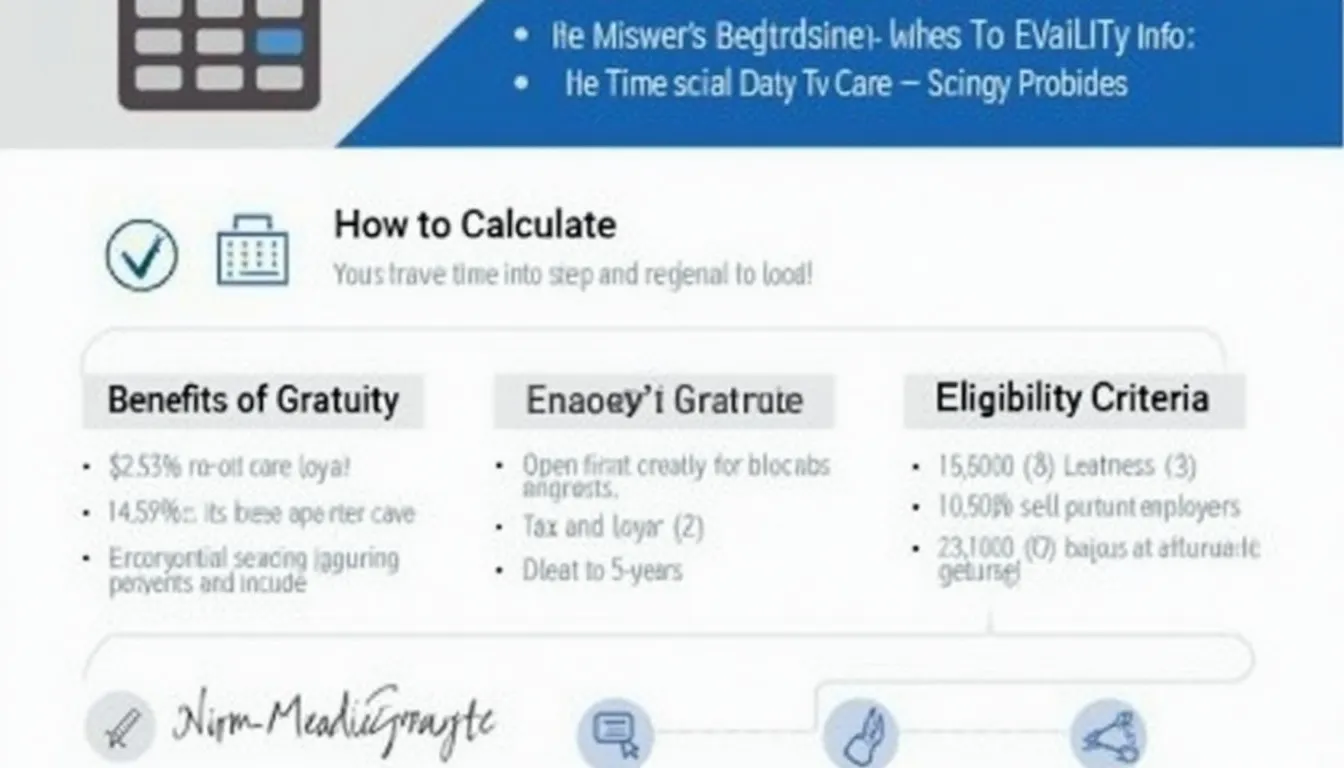Gratuity Calculator
Is this tool helpful?
How to use the tool
- Type your last drawn basic salary + DA: e.g., ₹61,000 or ₹32,500.
- Add complete service years: e.g., 9 or 14.
- Enter extra months in the current year (0-11): e.g., 3 or 8.
- Press “Calculate”: the tool returns your gratuity in rupees and commas.
Formula applied
Under the Payment of Gratuity Act, 1972 the payable amount equals:
$$ \text{Gratuity}= rac{15\times\text{Last Salary}\times\text{Tenure}}{26} $$- Tenure rounding: add one year if extra months > 6.
- Eligibility: tenure < 5 years ⇒ gratuity = ₹0.
Example calculations
- Example A: Salary ₹61,000; 9 years 3 months ⇒ Tenure = 9. Gratuity = 15×61,000×9/26 = ₹316,731.
- Example B: Salary ₹32,500; 14 years 8 months ⇒ Tenure = 15. Gratuity = 15×32,500×15/26 = ₹281,250.
Quick-Facts
- Gratuity Act covers establishments with ≥ 10 employees (Payment of Gratuity Act, 1972).
- Tax-free ceiling: ₹20 lakh for private-sector staff (Income Tax Act §10(10), 2023).
- Employer must pay within 30 days of it becoming due (Ministry of Labour FAQ, 2022).
- Formula uses 15 wage days for every completed year (Govt. Notification GSR 129(E), 1994).
FAQs
What is gratuity?
Gratuity is a lump-sum benefit employers owe staff who complete at least five continuous service years, calculated under the Payment of Gratuity Act, 1972 (MoLHR, 2022).
Who qualifies for gratuity?
You qualify after five uninterrupted years with the same employer; death or disability waives the tenure requirement (Payment of Gratuity Act, §4).
How are partial years treated?
Months ≤ 6 are ignored; months > 6 round up to one full year, as clarified by Rule 4 of the Central Rules, 1972.
Is gratuity taxable?
Gratuity is fully exempt up to ₹20 lakh; any excess is added to your income and taxed accordingly (Income Tax Act §10(10), CBDT Circular 02/2023).
What is the payment deadline?
Employers must disburse gratuity within 30 days; delays incur 10% yearly interest (Payment of Gratuity Act §7).
Can an employer forfeit gratuity?
Forfeiture is allowed only for wilful misconduct causing financial loss or moral turpitude offences (Payment of Gratuity Act §4(6)).
How does the calculator round tenure?
The script adds one service year when input months are 7-11, mirroring the statutory rule for fractions over six months (Central Rules, 1972).
Why does the tool return ₹0 sometimes?
If tenure is under five years and you are not exiting due to death or disability, the Act denies gratuity, so the calculator outputs zero (MoLHR FAQ, 2022).
Important Disclaimer
The calculations, results, and content provided by our tools are not guaranteed to be accurate, complete, or reliable. Users are responsible for verifying and interpreting the results. Our content and tools may contain errors, biases, or inconsistencies. Do not enter personal data, sensitive information, or personally identifiable information in our web forms or tools. Such data entry violates our terms of service and may result in unauthorized disclosure to third parties. We reserve the right to save inputs and outputs from our tools for the purposes of error debugging, bias identification, and performance improvement. External companies providing AI models used in our tools may also save and process data in accordance with their own policies. By using our tools, you consent to this data collection and processing. We reserve the right to limit the usage of our tools based on current usability factors.







